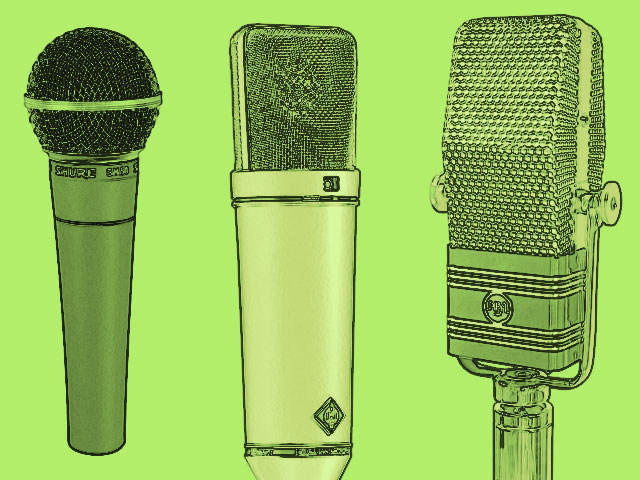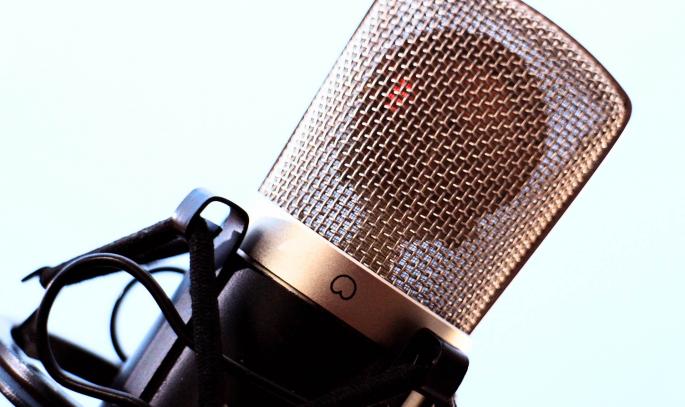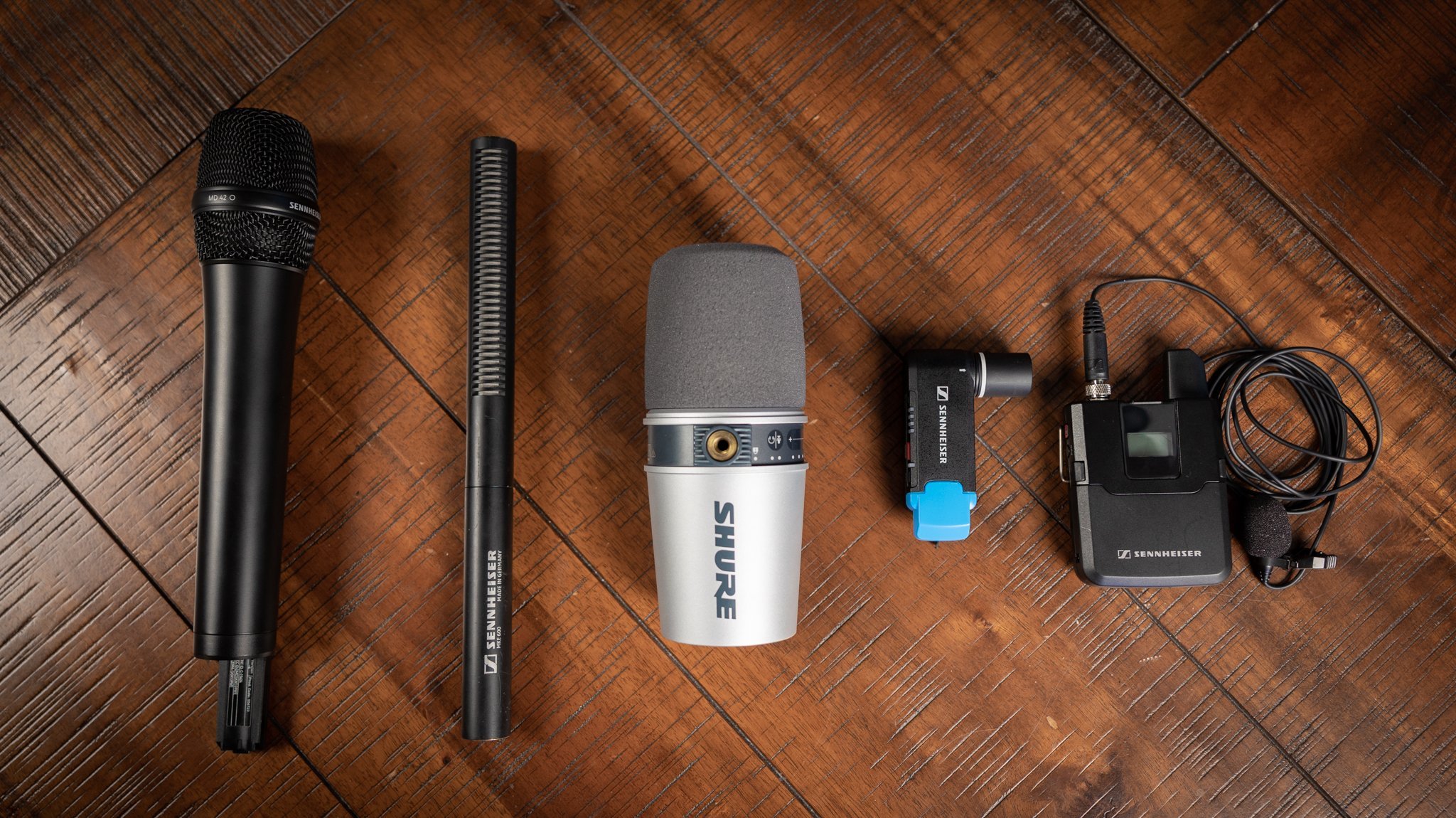Microphone types and uses can vary depending on the application. There are several common types of microphones, including dynamic, condenser, ribbon, and USB, each with their own characteristics and benefits for different recording situations.
Microphones are essential tools in the audio industry, capturing sound for various purposes such as music recordings, live performances, podcasts, and video productions. Understanding the different types of microphones and their uses can help you choose the right one for your specific needs.
We will explore the basics of microphone types and their different applications. We will go over the differences between dynamic and condenser microphones, as well as explain ribbon and USB microphones. Additionally, we will discuss some common uses for each type of microphone to help you make an informed decision when selecting the right one for your next project.

Credit: sessionville.com
Dynamic Microphones
Dynamic microphones are commonly used in live performances, due to their ability to handle high sound pressure levels. They are also versatile and can be used for a variety of sources, such as vocals and instruments.
Dynamic microphones are among the most popular types of microphones used in various live settings. These types of microphones are highly versatile, durable, and capable of handling high sound pressures, making them ideal for recording loud sound sources. They are also affordable and can serve different purposes, including recording vocals, guitars, drums, and other musical instruments. In this section, we will take a closer look at how dynamic microphones work and their common uses in live settings.
How They Work
Dynamic microphones work on the principle of electromagnetic induction. In essence, they consist of a diaphragm made of a thin metallic or plastic film that vibrates when exposed to sound waves. The diaphragm is connected to a thin metal coil, which is suspended within a magnetic field. As the diaphragm vibrates, the coil moves back and forth, generating an electrical signal that corresponds to the sound waves’ frequency and amplitude. One major advantage of dynamic microphones is their ability to handle high sound pressure levels. This is achieved because the diaphragm and coil are suspended on a shock mount that absorbs mechanical shocks and vibrations. This also makes them less prone to distortion and noise, even in high-volume situations.
Uses In Live Settings
Dynamic microphones are widely used in live settings, including concerts, conferences, speeches, podcasts, and other events that require sound reinforcement. Some of the common uses of dynamic microphones in live settings include:
- Recording vocals: Dynamic microphones capture the warm tones of a singing voice and can handle high sound pressure levels that can be produced by powerful singers.
- Recording musical instruments: Dynamic microphones can be used to record a range of musical instruments, including drums, guitars, and bass guitars. They can handle high sound pressure levels produced by amplifiers and percussion instruments without producing distortion or noise.
- Speeches and other events: Dynamic microphones are often used to amplify speakers’ voices during conferences, speeches, and other events. Their directional patterns can also help isolate the speaker’s voice from other sounds, reducing noise and feedback.
- Podcasts and broadcasting: Dynamic microphones are commonly used in podcasting and broadcasting due to their durability, affordability, and ease of use. They are also ideal for capturing the human voice’s nuances and warm tones, making them a popular choice for radio and other broadcasting applications.
In conclusion, dynamic microphones are an excellent choice for recording and amplifying live sound sources. They are versatile, durable, and capable of handling high sound pressure levels without producing noise or distortion. Their affordability and ease of use make them a popular choice for musicians, speakers, podcasters, and broadcasters alike.

Credit: www.gearank.com
Condenser Microphones
Condenser microphones are a popular type of microphone used in professional audio recording, live performance, and broadcasting. They are known for their high sensitivity, accuracy, and clarity in capturing sound. These microphones require phantom power to operate and are typically more expensive than dynamic microphones.
Condenser microphones are also known as capacitor microphones, and they are popular for their sensitivity and ability to capture nuanced sounds. These microphones use a thin diaphragm that vibrates in response to sound waves, and the vibrations are then translated into an electrical signal. They require a power source, known as phantom power, to work effectively.
How They Work
Condenser microphones work through the use of a vibrating diaphragm. This diaphragm is made of thin metal foil or plastic, and it is placed close to a metal backplate. As sound waves hit the diaphragm, it moves back and forth, creating variations in the distance between it and the backplate. This movement of the diaphragm results in a change in capacitance, which is the ability of the microphone to store an electrical charge. The change in capacitance creates an electrical signal that is then amplified and converted into sound.
Uses In Studio Settings
Condenser microphones are commonly used in studio settings for recording vocals, acoustic instruments, and ambient sounds due to their sensitivity and ability to capture subtle nuances. They are ideal for creating high-quality recordings that require a lot of detail and clarity. These microphones are also frequently used for podcasting and live streaming. They can also be used for broadcasting, especially in settings where high-quality sound is important, such as news programs and sports broadcasts. Overall, condenser microphones are reliable and versatile tools for recording and capturing sound. Their sensitivity and ability to capture subtle sounds make them an essential tool in any recording studio.
Ribbon Microphones
Ribbon microphones have a classic design that set them apart from other microphones. Instead of utilizing a diaphragm like most microphones, they use a long, thin strip of metal that is suspended in a magnetic field. When sound waves hit the metal ribbon, it vibrates within the magnetic field, creating an electrical current which is converted into an audio signal. This unique design results in a warm and silky sound that is perfect for certain applications.
How They Work
Ribbon microphones work similarly to dynamic microphones, but instead of utilizing a diaphragm and voice coil, they use a thin strip of metal suspended between magnets in a magnetic field. When sound waves hit the ribbon, it vibrates within the magnetic field, creating an electrical current which is converted into an audio signal.
Uses In Vintage Recording
- Ribbon microphones are often used in vintage recording, as they were popular during the early days of recording.
- They are commonly used for capturing the sound of instruments such as brass, woodwinds, and strings, as well as for recording vocals.
- Ribbon microphones can help to add warmth and character to a recording, making them a popular choice for musicians looking for a classic sound.
- They are also used in broadcasting, where their smooth sound is ideal for radio and television applications.
Overall, ribbon microphones are a popular choice for musicians and audio professionals looking for a unique and classic sound. Their warm, silky sound and vintage design make them ideal for capturing the sound of instruments and vocals in a variety of applications.
Usb Microphones
USB microphones are a type of microphone that connects with a computer or laptop through the USB port. They are easy to set up and are perfect for podcasters, gamers, or anyone who needs a small and affordable microphone for their projects.
How They Work
USB microphones are versatile and easy to use. They work by connecting a USB cable to a computer, eliminating the need for a separate audio interface. When the microphone is connected, the computer automatically recognizes it as an audio input device. USB microphones are condenser mics, which means they require phantom power to operate.
Uses In Home Recording
USB microphones are ideal for home recording setups, as they offer an affordable and convenient way to capture high-quality audio. They are popular among podcasters, vloggers, and musicians who record demo tracks. USB mics are also commonly used for voiceovers, video conferencing, and gaming. Some USB microphones come with built-in preamps and headphone jacks, making them an all-in-one solution for recording and monitoring audio. If you’re looking to buy a USB microphone, make sure to check the frequency response and polar pattern. These factors will affect the microphone’s sound quality and pick-up pattern. Additionally, some USB microphones may have gain controls or multiple pick-up patterns, allowing for more versatility in recording. Overall, USB microphones are a great option for those who want high-quality audio without investing in expensive recording equipment. They are user-friendly and offer a range of uses for content creators and hobbyists alike.
Wireless Microphones
Wireless microphones are a popular type of microphone used in live performances and events where mobility is necessary. They allow performers to move freely without being tethered to a wired microphone, and can also provide better sound quality and clarity for the audience.
Wireless microphones are becoming increasingly popular for several reasons. They provide freedom of movement and allow presenters and performers to move around while speaking or singing. They are also easy to use and eliminate the need for cords and wires, resulting in more organized and less cluttered stage setups. Wireless microphones are available in a variety of types, including handheld, lavalier, and headset models. In this section, we will discuss how wireless microphones work and their uses in corporate presentations.
How They Work
Wireless microphones use electromagnetic waves to transmit sound signals from the microphone to a receiver. The microphone’s sound waves are converted into electrical signals, which are then transmitted via radio waves to a receiver. The receiver decodes the electrical signals and amplifies them, allowing the sound to be heard through speakers or headphones. There are two types of wireless microphones: analog and digital. Analog microphones use radio frequencies to transmit information, while digital microphones use digital signals. Digital microphones are generally more advanced and provide better sound quality and less interference.
Uses In Corporate Presentations
Wireless microphones are commonly used in corporate presentations to provide a clear and professional sound quality. They enable presenters to move around freely without worrying about tripping over cords or wires, allowing them to engage with their audience more effectively. Additionally, wireless microphones offer a more polished look as there will be no visible cords or wires on the stage. Wireless lavalier and headset microphones are especially popular in corporate settings as they provide hands-free usage. These types of microphones are perfect for presenters who need to use props or other visual aids during their presentation. In conclusion, wireless microphones provide an excellent solution for those who need mobility and flexibility during their performance or presentation. They provide clear and professional sound quality, enabling presenters to engage with their audience more effectively. With the benefits they offer, it’s easy to see why more and more people are using wireless microphones in a variety of settings.
Lavalier Microphones
Lavalier microphones, also known as lapel mics, are small and discreet microphones often worn clipped onto clothing. They are commonly used for interviews, speeches, and presentations where mobility and hands-free operation are important.
Lavalier microphones, also known as lapel mics, are the most common type of microphone used in television production and public speaking. These small and lightweight microphones come with a clip that attaches to clothing, making them the ideal choice for recording audio in situations where a handheld microphone would be impractical or visible.
How They Work
Lavalier microphones work by using a small diaphragm that converts sound waves into electrical signals. They typically use either a condenser or electret condenser capsule, which requires a power source such as a battery or phantom power from a mixing desk. Once attached to the talent’s clothing, the microphone is positioned near the mouth or chest to capture the best sound quality. Lavalier microphones are omnidirectional, which means they capture sound from all directions, making them ideal for recording in environments where there is ambient noise.
Uses In Television Production
Lavalier microphones are commonly used in television production, where they are used to capture clear audio from talent on camera. They are often used in news broadcasts, documentaries, and talk shows, to name a few. These microphones are also used in film production, allowing actors to deliver their lines without being distracted by holding a microphone. Another advantage of the lavalier microphone is that it can be hidden from view. This means that talent can move around freely without being limited by holding a microphone. This makes them a great option for reality television shows or live events, where the talent needs to move around the stage. In conclusion, lavalier microphones are an essential tool for any television or video production. They are compact, lightweight, and allow for high-quality audio recording in various situations. The omnidirectional pickup pattern makes them ideal for noisy environments, ensuring that you capture the best sound quality possible.

Credit: www.boxcast.com
Frequently Asked Questions On Microphone Types And Uses
What Are The 4 Main Types Of Microphones?
The four main types of microphones are dynamic, condenser, ribbon, and piezoelectric. Dynamic mics are durable and affordable, while condenser mics are sensitive and provide high-quality sound. Ribbon mics are known for their warm tones, while piezoelectric mics are useful for amplifying acoustic guitars.
What Are The 3 Main Microphones?
The 3 main types of microphones are dynamic, condenser, and ribbon. Dynamic microphones are rugged and ideal for live performances. Condenser microphones are sensitive and ideal for recording studios. Ribbon microphones are vintage and provide warmth to audio recordings.
What Are 10 Uses Of Microphones?
Microphones are used for recording music, podcasting, live performances, public speaking, broadcasting, gaming, video conferencing, language translation, surveillance, and environmental monitoring.
What Is The Most Commonly Used Microphone?
The Shure SM58 is the most commonly used microphone. It is a dynamic microphone that has been an industry standard for live vocals since 1966. The SM58 is known for its durability, reliability, and high-quality sound. It is used by musicians, speakers, and performers worldwide.
Conclusion
Choosing the right microphone can be a daunting task, but knowing the different types and their uses can simplify the process. Whether you’re a musician, podcaster, or content creator, selecting the perfect microphone can greatly improve the quality of your work.
From dynamic to condenser and ribbon to USB, each microphone type offers its unique advantages and disadvantages that should be considered before making a final decision. Don’t overlook the importance of selecting the right microphone for your specific needs, and enjoy the benefits of improved audio quality in your work.